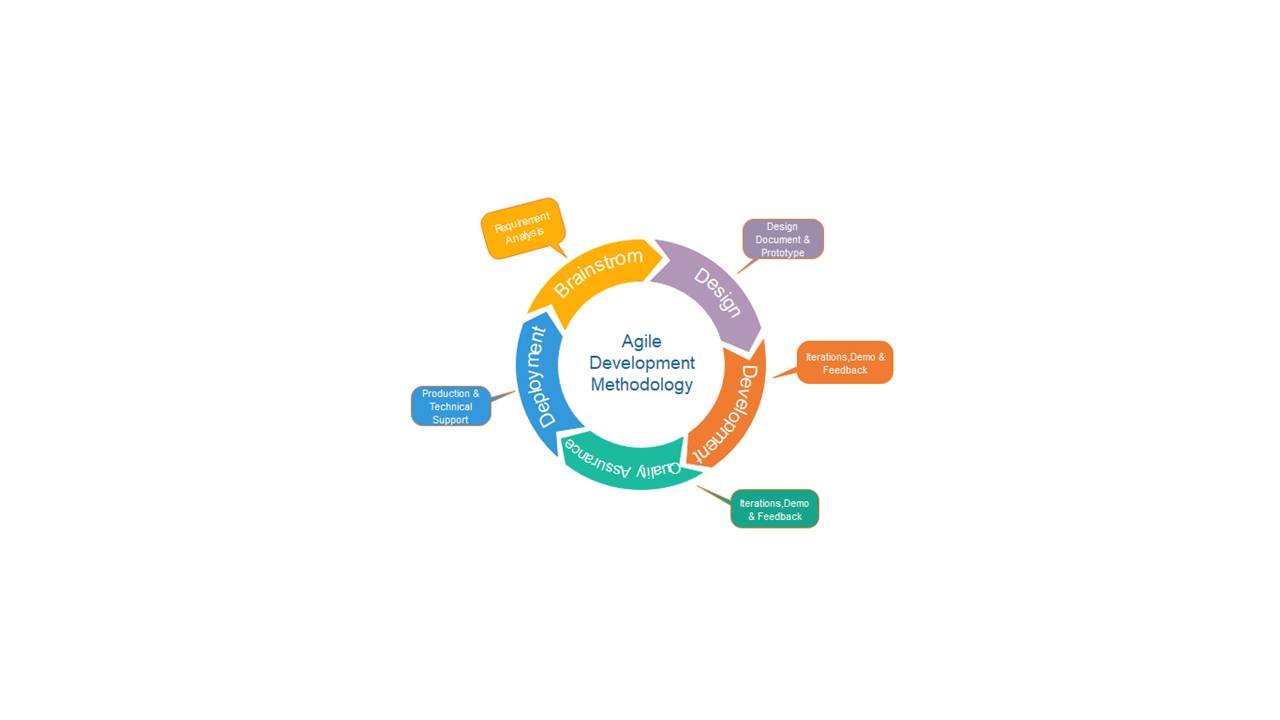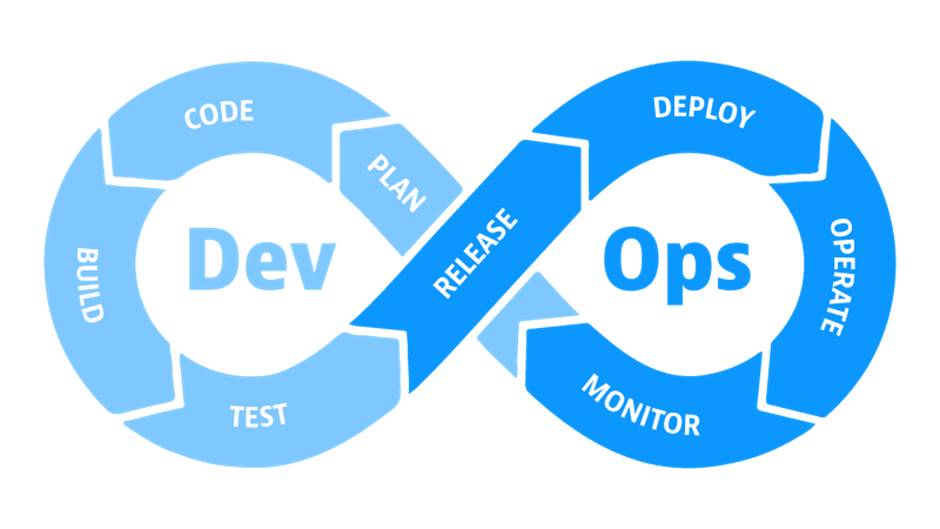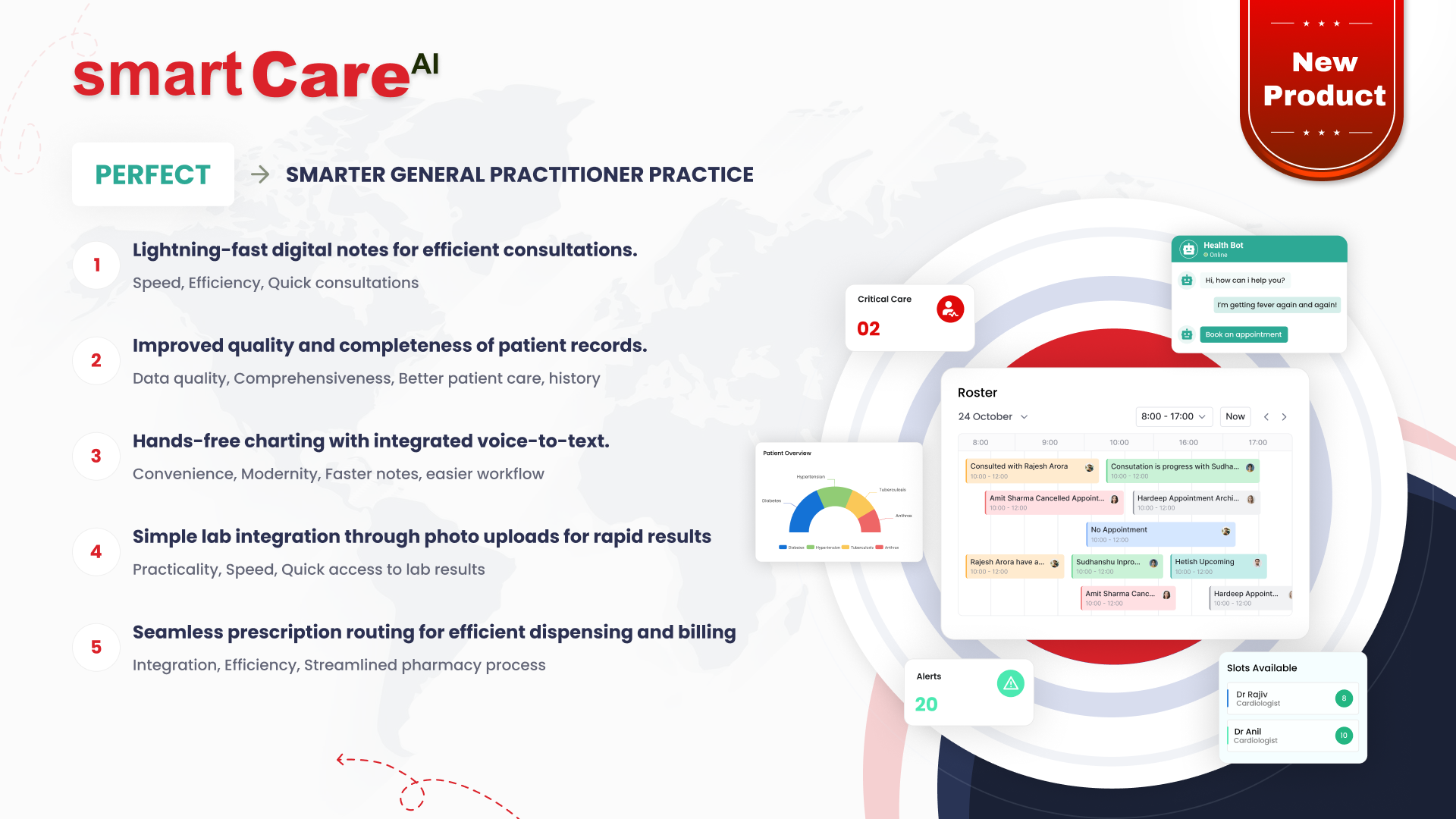Healthcare IT consulting firms specialize in advising medical practices on how to leverage technology to improve their operations. They provide expertise in various IT solutions, from electronic health records (EHR) systems to telemedicine platforms. By partnering with these experts, your practice gains access to valuable insights and guidance tailored to the unique challenges of the healthcare industry.
Enhanced Operational Efficiency Through Technology
One of the primary benefits of working with a healthcare IT consulting firm is the improvement in operational efficiency. These consultants help streamline workflows by integrating advanced technology solutions that automate routine tasks, reduce paperwork, and minimize errors. This leads to a more organized practice where staff can focus more on patient care rather than administrative duties.
Improved Patient Care and Experience
Consulting firms play a crucial role in enhancing patient care and experience. By implementing user-friendly EHR systems and other digital tools, they ensure that patient information is easily accessible and accurately recorded. This results in faster and more accurate diagnoses, better coordination of care, and a more personalized patient experience, ultimately leading to higher satisfaction and better health outcomes.
Streamlined Compliance and Regulatory Management
Navigating healthcare regulations can be complex and time-consuming. Healthcare IT consultants help practices stay compliant with industry standards and regulations by implementing systems that ensure proper documentation and reporting. They assist in managing data security, privacy concerns, and other compliance issues, reducing the risk of costly penalties and legal challenges.
Cost Savings and Resource Optimization
Partnering with a healthcare IT consulting firm can lead to significant cost savings. By optimizing technology investments and improving operational efficiencies, practices can reduce overhead costs and avoid unnecessary expenditures. Additionally, these consultants can help identify areas where resources can be better allocated, leading to more effective use of funds and improved financial health for the practice.

Access to Specialized Expertise and Knowledge
Partnering with a healthcare IT consulting firm gives your practice access to a team of experts with deep knowledge in healthcare technology and IT systems. These professionals stay up-to-date with the latest advancements and regulations, ensuring that your practice benefits from the most current and effective solutions. Their specialized skills can help you navigate complex IT challenges and make informed decisions that align with your practice’s goals.
Tailored IT Solutions for Unique Practice Needs
Every healthcare practice has unique needs and challenges. A consulting firm can provide customized IT solutions that fit your specific requirements. Whether it’s implementing a new electronic health record (EHR) system or optimizing existing IT infrastructure, these solutions are designed to enhance efficiency and support the specific workflows of your practice. Tailored solutions ensure that you get the most value out of your technology investments.
Implementation of Cutting-Edge Technologies
Healthcare IT consulting firms are well-versed in the latest technologies that can revolutionize your practice. From advanced data analytics to telemedicine platforms, these firms help you integrate cutting-edge technologies that improve patient care and operational efficiency. By leveraging these innovations, your practice can stay competitive and provide high-quality care that meets modern standards.
Data Security and Risk Management
Protecting patient data is crucial in healthcare, and a consulting firm can help safeguard your practice against data breaches and security threats. They implement robust security measures and risk management strategies to ensure that sensitive information remains confidential and secure. By partnering with experts, you can mitigate risks and comply with regulatory requirements, giving you peace of mind.
Ongoing Support and Maintenance Services
Technology requires regular maintenance and support to function optimally. A healthcare IT consulting firm offers ongoing support services to address any issues that may arise. This proactive approach ensures that your IT systems remain operational and up-to-date, minimizing downtime and disruptions. With reliable support, your practice can focus on delivering excellent patient care without worrying about technical issues.
Conclusion
Partnering with a healthcare consulting firm provides numerous benefits, from specialized expertise and strong data security. By leveraging these advantages, your practice can enhance its efficiency, improve patient care, and stay ahead in the rapidly evolving healthcare landscape. For more information on how healthcare IT consulting can benefit your practice, visit Smart Data Inc..
With machine’s capabilities to precisely interpret the visual information, computer vision has opened a lot many potential opportunities by improving diagnosis, treatment, and patient care.
Some of the potential use-cases where computer vision can be highly utilized are defined below:
- A key application in healthcare is the analysis of medical images. Algorithms powered by computer vision can evaluate images like X-rays, MRIs, and CT scans, identifying abnormalities that might be overlooked by human observation. This enables earlier detection and more effective treatment of conditions like cancer and heart disease.
- It can also be used to develop wearable devices that can monitor patients’ vital signs and detect changes that may indicate a health problem. This can enable earlier intervention and prevent serious health complications.
- As another use-case, it is also getting used to reduce the risk of complications and improve patient outcomes during the surgical operations. Here computer vision is leveraged to guide robots in performing delicate surgical procedures with greater precision and accuracy than is possible with traditional methods.
- In addition, computer vision is being used for patient monitoring also where the AI-powered cameras can track patients’ movements, alerting medical staff to falls or irregularities in patient behavior, especially in elderly care. AI models hence developed take real-time CCTV feed to monitor the patients.

As a conclusion we can consider computer vision to be potential candidate which can transform healthcare by improving diagnosis, treatment, and patient care.
Revenue Cycle Management includes everything from verifying patient insurance to billing and collecting payments. Proper RCM ensures that healthcare providers are compensated fairly and promptly for their services.
The Role of IT Services in Enhancing RCM Efficiency
Healthcare IT services play a vital role in streamlining RCM by implementing systems and technologies that automate and simplify financial processes. These IT solutions reduce manual errors, speed up billing cycles, and enhance the overall efficiency of revenue management. By integrating technology into RCM, providers can achieve better financial outcomes and improve their operational workflow.
Key Challenges in Revenue Cycle Management
RCM faces several challenges, including complex billing codes, frequent claim denials, and difficulties in tracking payments. These issues can lead to delays and revenue losses. Healthcare IT services help address these challenges by providing tools and support to handle complex billing requirements and reduce errors in claims processing.
How Healthcare IT Services Can Streamline Billing Processes
IT services optimise billing processes through automation and electronic data exchange. By using advanced software, healthcare providers can automatically generate and submit claims, track payment status, and manage patient accounts more effectively. This automation reduces the administrative burden and accelerates the revenue cycle.
Implementing Advanced Software Solutions for RCM
Advanced software solutions for RCM include integrated systems that connect various aspects of the revenue cycle, such as patient registration, claims processing, and payment reconciliation. These solutions offer real-time data access, reporting capabilities, and predictive analytics, allowing healthcare providers to make informed decisions and improve financial performance.
Optimizing Claims Processing with IT Innovations
Healthcare IT services enhance claims processing by integrating advanced software solutions that automate data entry, streamline claim submission, and reduce errors. Innovations like electronic claim management systems and real-time claim tracking ensure quicker and more accurate processing, minimising delays and rejections.
The Impact of Automation on Revenue Cycle Accuracy
Automation plays a crucial role in improving the accuracy of revenue cycle management. Automated systems reduce manual errors by handling repetitive tasks such as coding and billing. This leads to more precise claims and faster reimbursement, ultimately enhancing financial performance and operational efficiency.
Data Security and Compliance in RCM Solutions
Ensuring data security and compliance is vital in RCM solutions. IT services providers implement robust security measures, such as encryption and access controls, to protect sensitive patient information. Compliance with regulations like HIPAA is maintained through regular audits and updates to safeguard against breaches and legal issues.

Integrating EHR Systems with Revenue Cycle Management
Integration of Electronic Health Records (EHR) systems with RCM solutions is key to seamless revenue cycle operations. By linking EHRs with billing systems, healthcare providers can access comprehensive patient information, streamline billing processes, and improve the accuracy of claims submissions, resulting in more efficient revenue cycles.
Analytics and Reporting Tools for Better RCM Outcomes
Analytics and reporting tools provide valuable insights into revenue cycle performance. By leveraging data analytics, healthcare IT services can identify trends, monitor key metrics, and uncover areas for improvement. These insights help in making informed decisions, optimising processes, and ultimately enhancing the overall effectiveness of RCM solutions.
Reducing Denials and Rejections through IT Solutions
One of the primary ways healthcare IT services providers optimize Revenue Cycle Management (RCM) solutions is by reducing claim denials and rejections. By leveraging advanced IT systems, healthcare providers can ensure that claims are submitted correctly the first time. This involves using intelligent data validation tools that check for errors before claims are sent to insurers. Additionally, IT solutions can track common denial reasons and provide insights into how to avoid them in the future. This proactive approach helps streamline the process, ensuring more claims are paid on time and reducing the administrative burden associated with managing denials.
Future Trends in RCM and Healthcare IT Integration
Looking ahead, several trends are shaping the future of Revenue Cycle Management and its integration with healthcare IT. One significant trend is the growing use of artificial intelligence (AI) and machine learning to predict and prevent revenue cycle issues before they arise. These technologies can analyze vast amounts of data to identify patterns and potential problems, allowing for more informed decision-making. Additionally, there is a push towards more integrated systems that connect various aspects of healthcare IT, from electronic health records (EHR) to billing and coding systems. This integration enhances overall efficiency and accuracy, providing a seamless experience for both healthcare providers and patients.
Conclusion
In summary, healthcare IT services providers play a crucial role in optimizing Revenue Cycle Management by addressing key challenges such as claim denials and integrating advanced technologies. By employing data validation tools, AI, and integrated systems, they enhance the efficiency and accuracy of RCM solutions. As these technologies continue to evolve, they promise even greater improvements in managing the revenue cycle, ultimately benefiting both healthcare providers and patients. For more information on optimizing your RCM solutions, visit SmartData Inc..
These models have been used in forecasting the prices of real estate based on the location, area, neighbourhoods, important landmarks and market conditions. At smartData, we use predictive analysis to enable clients to locate their ideal property by harnessing the power of machine learning models. We grade the locations based on the amenities available, historical price trends, and other factors so that our clients can make a knowledgeable decision about possible investments. Our models scale down for the clients the otherwise cumbersome process of searching for property and reduce time and effort in the quest for a high-value opportunity. With the help of smartData capabilities, the clients develop their competitive advantage in the real estate marketplace by assuring them of the very best properties that best suit their preferences and financial goals.

At smartData, we extend predictive analysis capabilities to the real estate market, helping clients efficiently locate ideal properties by leveraging machine learning models. These models assess key factors such as location, historical price trends, neighborhood amenities, and market conditions. By grading locations and streamlining the property search process, we enable clients to make informed investment decisions quickly. This process not only reduces time and effort but also provides clients with a competitive edge, ensuring they secure high-value real estate opportunities that align with their financial goals and preferences.
Predictive analytics is transforming healthcare, and smartData is at the forefront of this change. By leveraging vast datasets, such as patient medical histories, genetic profiles, and environmental factors, smartData’s advanced solutions can help predict disease risks. This allows healthcare providers to intervene earlier with tailored treatments and preventive care plans. With these innovations, smartData supports the healthcare industry in improving patient outcomes, reducing hospital readmissions, and enhancing overall efficiency in care delivery. Through cutting-edge predictive models, smartData is enabling smarter, data-driven healthcare solutions.
Disease Prediction and Early Intervention
One of the most impactful applications of predictive analytics in healthcare is disease prediction. By analyzing vast amounts of patient data, including medical history, genetic profiles, wound assessment data, and environmental factors, predictive models can identify individuals at high risk for specific conditions. This enables healthcare providers to intervene early with preventive measures and tailored treatment plans, potentially saving lives and reducing hospital readmissions.

Wound Assessment and Predictive Care
Wound management is another area where predictive analytics can be a game changer. By utilizing AI-driven wound assessment tools, healthcare providers can monitor healing progress in real-time, predict complications such as infections, and optimize treatment. Advanced wound care models can analyze factors like wound size, depth, patient health conditions, and tissue response to recommend personalized interventions. This reduces healing time, minimizes complications, and improves patient outcomes, particularly for chronic wound patients.
Personalized Treatment Plans
Beyond disease and wound prediction, predictive analytics plays a crucial role in personalized care. Data-driven models analyze historical patient data to identify patterns that help healthcare professionals make more informed decisions about treatments. These models can suggest the most effective therapies, medications, and lifestyle changes, ensuring that each patient receives care tailored to their unique health profile. This approach fosters patient engagement, improves compliance, and enhances overall health outcomes.
Operational Efficiency in Healthcare
Predictive analytics also addresses operational challenges like care gap analysis, pharmacy stock prediction, and hospital resource management. By forecasting patient demand and predicting resource utilization, healthcare organizations can optimize staffing levels, manage supply chains, and allocate medical resources more effectively. For example, by analyzing patient data, hospitals can predict peak times for admissions, ensuring that staffing and supplies are aligned to meet demand, ultimately enhancing the quality of care and reducing costs.
Improving Healthcare Outcomes with Data
As the healthcare industry grapples with issues like staff shortages, rising costs, and an aging population, the power of predictive analytics is more relevant than ever. Wound care, disease prevention, personalized treatment, and operational improvements all benefit from this data-driven approach. By leveraging advanced algorithms and machine learning, healthcare providers can make better-informed decisions, improve patient outcomes, and ensure long-term sustainability.
At smartData, we specialize in helping healthcare organizations implement predictive analytics to address these critical use cases. Whether you are looking to enhance disease prediction, improve wound assessment, or optimize operational efficiency, our expertise can guide you through the process.
Let us partner with you to harness the power of data and drive transformative change in your healthcare services.
We are helping organizations to support the move to value-based care, reimagine the public healthcare infrastructure, leverage technology to improve access, shift more hospital care into the home, cut the red tape, and keep patients engaged.
Our journey in digital health is driven by the mission to build a healthcare ecosystem that is personalized, efficient, and accessible to all globally. Our solutions aim to enhance patient care and empower individuals through innovative approaches.
Our commitment to healthcare is evident through these implementations :-
Telehealth & Virtual Care platforms
- These platforms bridge the gap between patients and healthcare professionals, offering a seamless, convenient, and accessible means of accessing medical expertise. Our solutions empower patients to connect with doctors, nurses, and specialists from anywhere, eliminating geographical barriers and making healthcare more efficient.
- We also prioritize Health & Wellness apps, which play a crucial role in promoting overall well-being. These apps provide a holistic approach to health, focusing not only on medical care but also on wellness and fitness.
User centric
- Applications designed for accessibility, making it effortless for individuals to monitor vital signs, manage medications, and access health-related information.
- In today’s interconnected world, smartData is seamlessly integrating a spectrum of IoT and medical devices. Our dedication to this cutting-edge approach ensures the smooth real-time flow of data and interoperability across a wide range of devices, including wearable health trackers, connected medical instruments, and intricate hospital machinery.
- At smartData we are commitment to enhancing patient care through advanced monitoring, precise care delivery, and improved health outcomes. By harnessing the power of IoT and integrating an array of medical devices, we empower healthcare providers to monitor their patients more effectively, deliver care with unparalleled precision, and ultimately drive better health results.
AI
- AI is transforming healthcare by reshaping clinical workflows and enhancing the roles of clinicians and medical staff. By automating repetitive tasks, AI allows physicians to focus more on personalized patient care, improving both efficiency and outcomes. Key applications of AI and machine learning in healthcare include Predictive Analytics, Personalised Medicine, Virtual Health Assistants,Medical Transcribing, Medical Imaging and Diagnostics.
- Our knowledge spans a wide array of regulatory standards, including HIPAA, CCDA, HL7, FHIR, PIPEDA, SNOMED, and many more.

What sets smartData apart is our commitment to going beyond mere standard adherence
This can be done through implementing Agile development methodologies, using strong project management tools for better monitoring and control, implementing DevOps, and automating the QA process for faster and stable deployments among others.
In today’s fast-paced business environment, Agile methodology is particularly well-suited for dynamic operations that benefit from improved processes and continuous feedback. By breaking down complex projects into smaller, manageable sprints, organizations can better respond to changing market conditions and evolving customer needs. Tools like Jira are vital in supporting Agile principles. They allow teams to track project progress, enhance collaboration, and improve task management efficiency.

On the other hand, DevOps represents a significant cultural shift, bridging the gap between development and operations. This approach optimizes the software delivery lifecycle. It does so by fostering collaboration and automating processes, ensuring that new features and enhancements are delivered swiftly without compromising system stability. Docker is a prime example of a platform that supports DevOps by enabling the consistent development, testing, and deployment of applications.

Automation plays a crucial role in operational efficiency, particularly through automated Quality Assurance (QA) and deployment processes. Automation reduces errors, speeds up time-to-market, and enhances software quality by streamlining testing procedures. Continuous Integration and Continuous Delivery (CI/CD) pipelines are key to accelerating the deployment of new features and bug fixes to end-users.
For businesses to fully leverage these methodologies and tools, a data-driven approach to operations management is essential. By collecting and analyzing data related to performance metrics, bottlenecks, and customer feedback, organizations can identify areas for improvement.
In conclusion, the integration of Agile methodologies, project management tools like Jira, DevOps practices, platforms like Docker, and automated QA and deployments creates a robust framework for efficient operations management. This framework allows organizations to adapt to change, deliver high-quality products and services, and achieve sustainable growth.
Key Roles of Leadership in Digital Transformation:
- Visionary Architect:
Leaders must articulate a clear and compelling digital vision that aligns with the organization’s mission and long-term goals. This vision serves as a guiding star, helping teams understand the ‘why’ behind the transformation and inspiring them to commit to the journey.
- Change Catalyst:
Digital transformation often requires a cultural shift within the organization. Leaders must act as change agents, fostering an environment that encourages experimentation, embraces failure as a learning opportunity, and celebrates innovation. They should champion an agile mindset, breaking down silos and promoting a culture of continuous improvement.
- Strategic Orchestrator:
Leaders must be adept strategic decision-makers, balancing the demands of current operations with future digital needs. This involves making informed choices about technology investments, partnerships, and resource allocation. It’s crucial to prioritize initiatives that deliver the most value and align with the digital vision.
- Talent Enabler:
A successful digital transformation hinges on the skills and capabilities of the workforce. Leaders must prioritize upskilling and reskilling initiatives to equip their teams with the necessary digital competencies. This also includes attracting and retaining top digital talent and creating a culture where continuous learning is encouraged.
- Risk Navigator:
With digital transformation comes increased exposure to risks, such as cybersecurity threats and data privacy issues. Leaders must be proactive in identifying, assessing, and mitigating these risks. This involves establishing robust governance frameworks and ensuring compliance with relevant regulations and standards.

Best Practices for Leaders:
- Lead by Example:
Leaders should embrace a growth mindset, demonstrating a willingness to learn and adapt to new technologies. By showing their commitment to digital transformation, they set a positive example for the rest of the organization.
- Foster Collaboration and Inclusivity:
Encourage cross-functional teams to collaborate, leveraging diverse perspectives to drive innovation. Inclusivity in leadership ensures that the transformation process benefits from a wide range of insights and experiences.
- Emphasize Customer-Centricity:
Digital transformation should ultimately enhance customer experience. Leaders should ensure that all digital initiatives are aligned with customer needs and preferences, using data-driven insights to tailor offerings and improve service delivery.
- Monitor Progress and Adapt:
Establishing key performance indicators (KPIs) is crucial for tracking the success of digital initiatives. Leaders should regularly review these metrics, remaining agile and ready to pivot strategies as necessary in response to changing market conditions or technological advancements.
- Cultivate a Resilient Organization:
Digital transformation can be disruptive. Leaders must build resilience within the organization, helping teams navigate change effectively and maintain momentum even in the face of challenges.
Conclusion:
Leadership plays a pivotal role in driving digital transformation success. By embracing their roles as visionary architects, change catalysts, strategic orchestrators, talent enablers, and risk navigators, leaders can navigate the complexities of digital change and propel their organizations forward. Remember, digital transformation is a journey, not a destination—and effective leadership is the key to unlocking its full potential. As the digital landscape continues to evolve, adaptable, forward-thinking, and customer-focused leaders will lead their organizations to thrive in the new digital era.
This agility enables businesses to stay competitive and responsive in a fast-paced environment.
Cost efficiency is another significant advantage of cloud solutions. Operating on a pay-as-you-go model, the cloud reduces the need for large capital expenditures on hardware and software, providing financial flexibility. This approach allows businesses to scale resources according to demand, optimizing costs and ensuring that they only pay for what they use.
At smartData, we help businesses harness these benefits to their fullest potential. Our expertise spans leading cloud platforms, including AWS, Azure, and GCP, enabling us to design and manage cloud infrastructures that are both efficient and secure. We tailor our solutions to meet the unique needs of each business, ensuring that their cloud infrastructure is optimized for growth.
Beyond infrastructure, our experience with diverse databases, such as PostgreSQL and DynamoDB, and proficiency in Extract, Transform, Load (ETL) services using technologies like Kafka and Kinesis, ensures that your data is not just stored but transformed into actionable insights.

With smartData, you’re not just investing in cloud infrastructure; you’re investing in a future where your digital enterprise thrives. Join us on this journey, where the cloud is both a resource and a catalyst for your business growth, driven by smartData’s expertise and commitment to excellence.
Here’s why new products are important:
- Cool Stuff, Happy Customers:
New things keep things interesting! Companies that launch new products that people want can grow and offer more variety. Think about phone companies like Apple and Samsung. They always have new phones with the latest features, which keeps us excited and wanting the newest model.
- Finding New Customers:
Sometimes companies want to reach new people. A new product can be like a magnet,attracting a whole new group of customers. For example, electric car companies like Tesla are creating a whole new market for people who want eco-friendly cars.
Launching a New Product: Step by Step
So how do companies launch these new products? Here’s the recipe:
- Find Out What People Want:
Before baking a cake, you need a recipe, right? In this case, the recipe is understanding what customers are looking for. Companies do this by asking questions and gathering information through surveys and focus groups.
- Make the Product:
Once they know what people want, it’s time to design, build, and test the new product. This is like following the recipe to mix the ingredients and bake the cake!
- Tell Everyone About It!:
Just because you baked a cake doesn’t mean people know it exists! Companies use advertising and social media to spread the word and get people excited. Imagine putting frosting on the cake and making it look delicious to attract customers.
- Get it to the Stores:
The cake is baked, but people need to be able to buy it! Companies work with stores and online sellers to make sure the product is available for everyone. This is like putting the cake on display at the bakery.

Big Impacts of New Products
New products can be a game changer for companies and even for us as consumers! Here’s how:
- More Money, More Success:
If a new product is a hit, companies can sell more and make more money. This is like the bakery selling a lot of cake and becoming more successful!
- Brand Power:
A great new product can make people see the company in a whole new way. Think about a company known for boring drinks that launches a super tasty new flavor. People might start to see them as more innovative and exciting.
- Change the Way We Do Things:
Sometimes, new products can be so good that they change the way we live! For example, smartphones totally revolutionized how we communicate and use technology.
Not Always Smooth Sailing
Launching a new product can be tricky, though. Here are some things to keep in mind:
- Things Can Go Wrong:
There’s always a chance that people won’t like the new product, or there might be problems making it. Companies need to be prepared for these challenges.
- Be Kind to Our Planet:
These days, people care a lot about the environment. Companies need to make sure their new products are made in a way that doesn’t hurt the planet.
The Takeaway
New products are a big deal for companies. They can help them grow, innovate, and be successful. By planning carefully and understanding what customers want, companies can launch new products that everyone loves!
